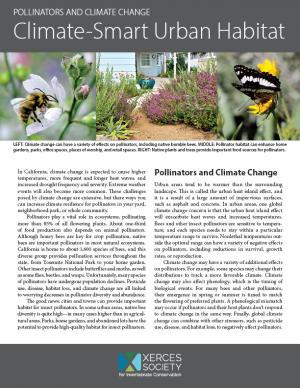
In California, climate change is expected to cause higher temperatures, more frequent and longer heat waves, and increased drought frequency and severity. Extreme weather events will also become more common. These challenges posed by climate change are extensive, but there ways you can increase climate resilience for pollinators in your yard, neighborhood park, or whole community.
Pollinators play a vital role in ecosystems, pollinating more than 85% of all flowering plants. About one-third of food production also depends on animal pollinators. Although honey bees are key for crop pollination, native bees are important pollinators in most natural ecosystems. California is home to about 1,600 species of bees, and this diverse group provides pollination services throughout the state, from Yosemite National Park to your home garden. Other insect pollinators include butterflies and moths, as well as some flies, beetles, and wasps. Unfortunately, many species of pollinators have undergone population declines. Pesticide use, disease, habitat loss, and climate change are all linked to worrying decreases in pollinator diversity and abundance.
The good news: cities and towns can provide important habitat for insect pollinators. In some urban areas, native bee diversity is quite high—in many cases higher than in agricultural areas. Parks, home gardens, and abandoned lots have the potential to provide high-quality habitat for insect pollinators.
